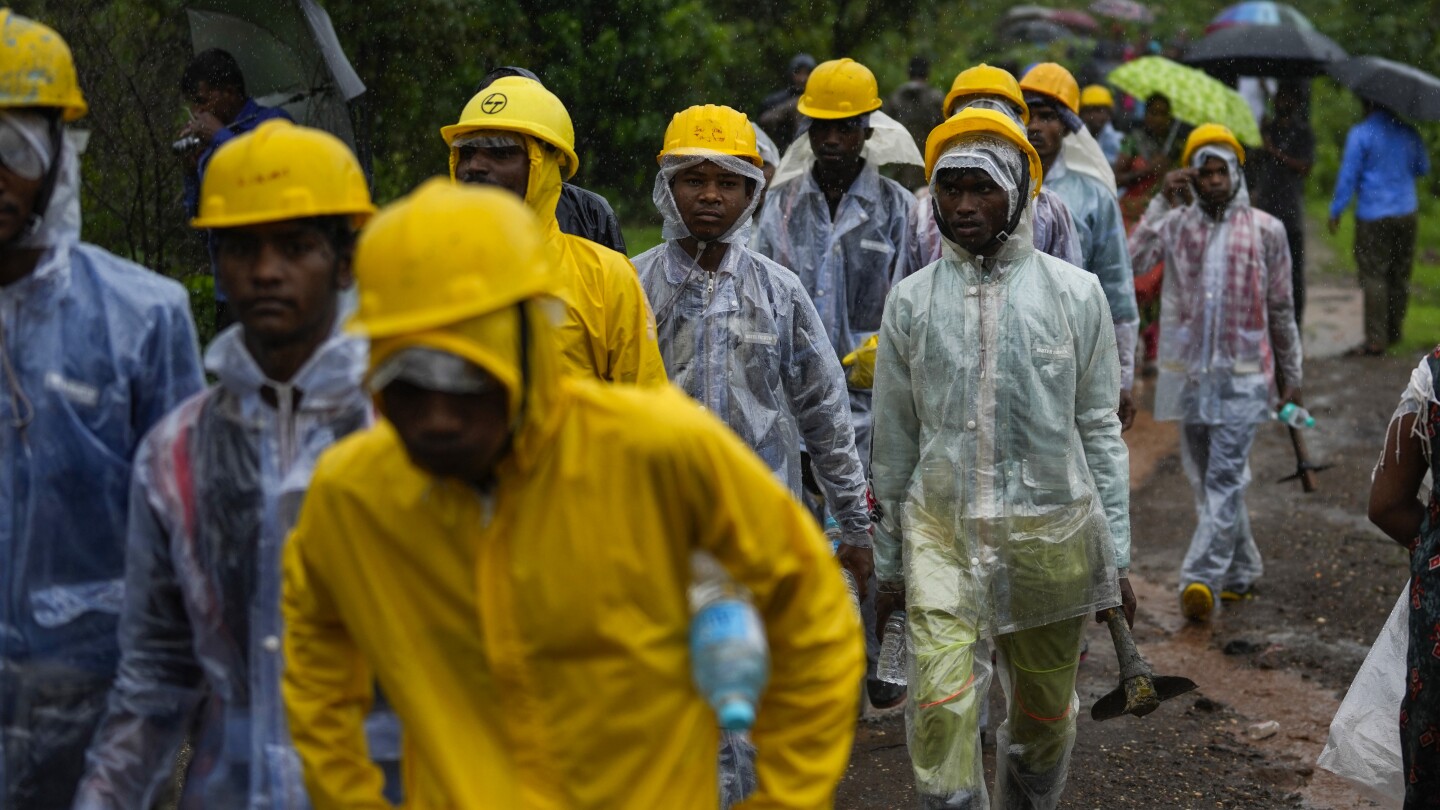NEW DELHI (AP) — Hundreds of rescuers ended a four-day search for scores of people still missing after heavy monsoon rains triggered a massive landslide in a village in western India, an official said Sunday.
The rescue teams recovered the bodies of 27 people killed in the Wednesday night landslide that hit the Raigadh district village of Irshalwadi, located nearly 80 kilometers (50 miles) from Mumbai, the Maharashtra state capital.
Seventy-eight people were thought to be missing as of Sunday, Deepak Avadh, an official of the National Disaster Response Force, said. The state government and the relief agency later decided to end the search operations, Avadh said, implying there was no hope of finding any survivors.
No more bodies were recovered Sunday, he said.
At least 17 of the 48 houses in the village were fully or partially buried under the debris, officials said. The dead included four children, the Press Trust of India news agency said, adding that 75 people were rescued. Four survivors were hospitalized.
Rescuers mostly used rods and shovels. Heavy equipment like earth movers and excavators could not reach the village, which has no paved roads and massive sludge around it, Avadh said. Sniffer dogs were also deployed in the search for survivors.
From the base of a hill, it took about 90 minutes to reach Irshalwadi village by foot. Rainfall and a threat of more landslides caused the rescue operation to be suspended during the night the landslide occurred, the rescue agency said.
India’s weather department placed Maharashtra under alert as the state was lashed by incessant rains the past week. Local train service was disrupted at several places with water flowing inside stations and over tracks, media reported.
Record monsoon rains have killed more than 100 people in northern India over the last three weeks, officials said, as the downpours caused roads to cave in and homes to collapse.
India regularly experiences severe floods during the monsoon season, which runs between June and September and brings most of South Asia’s annual rainfall. The rains are crucial for rain-fed crops planted during the season but often cause extensive damage.
Scientists say monsoons are becoming more erratic because of climate change, leading to frequent landslides and flash floods in India’s Himalayan north.
___
Follow AP’s coverage of the climate and environment at: https://apnews.com/climate-and-environment

